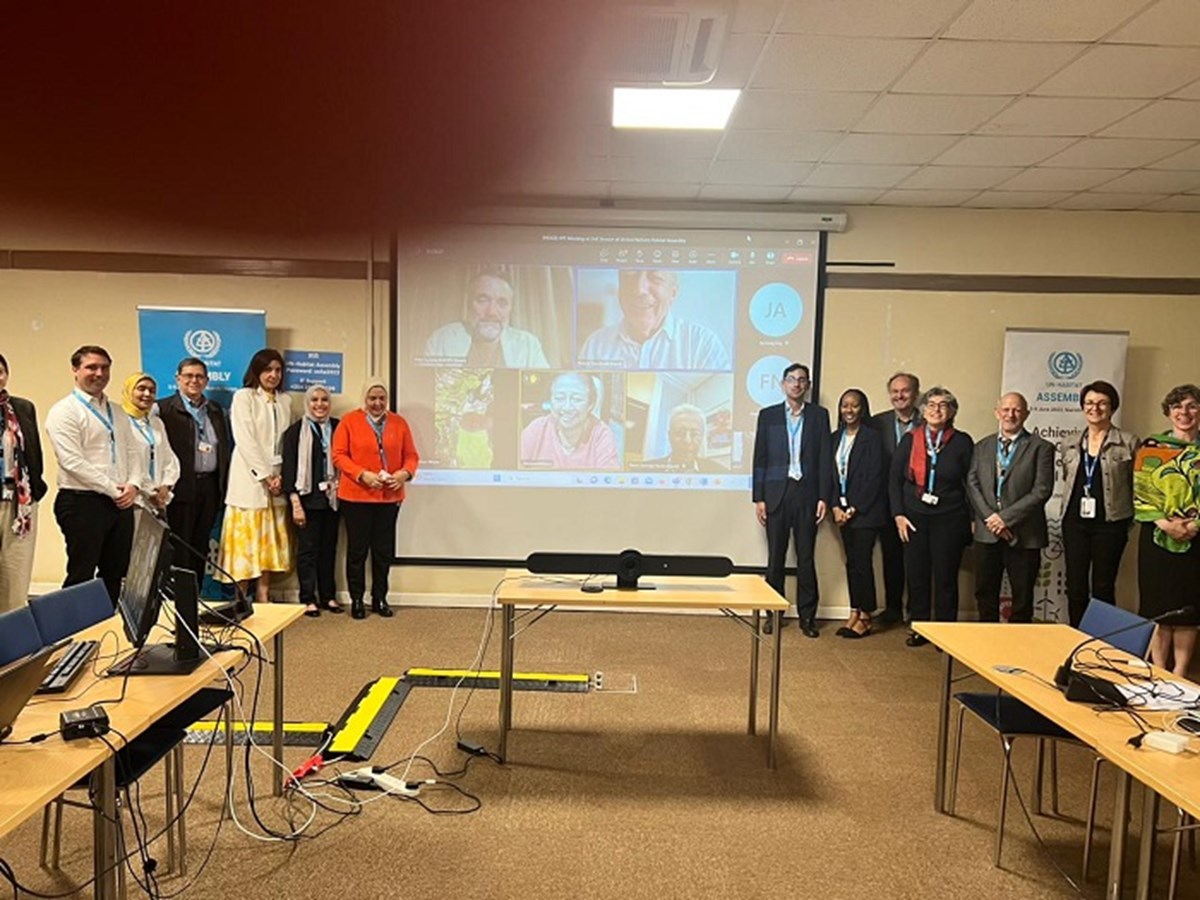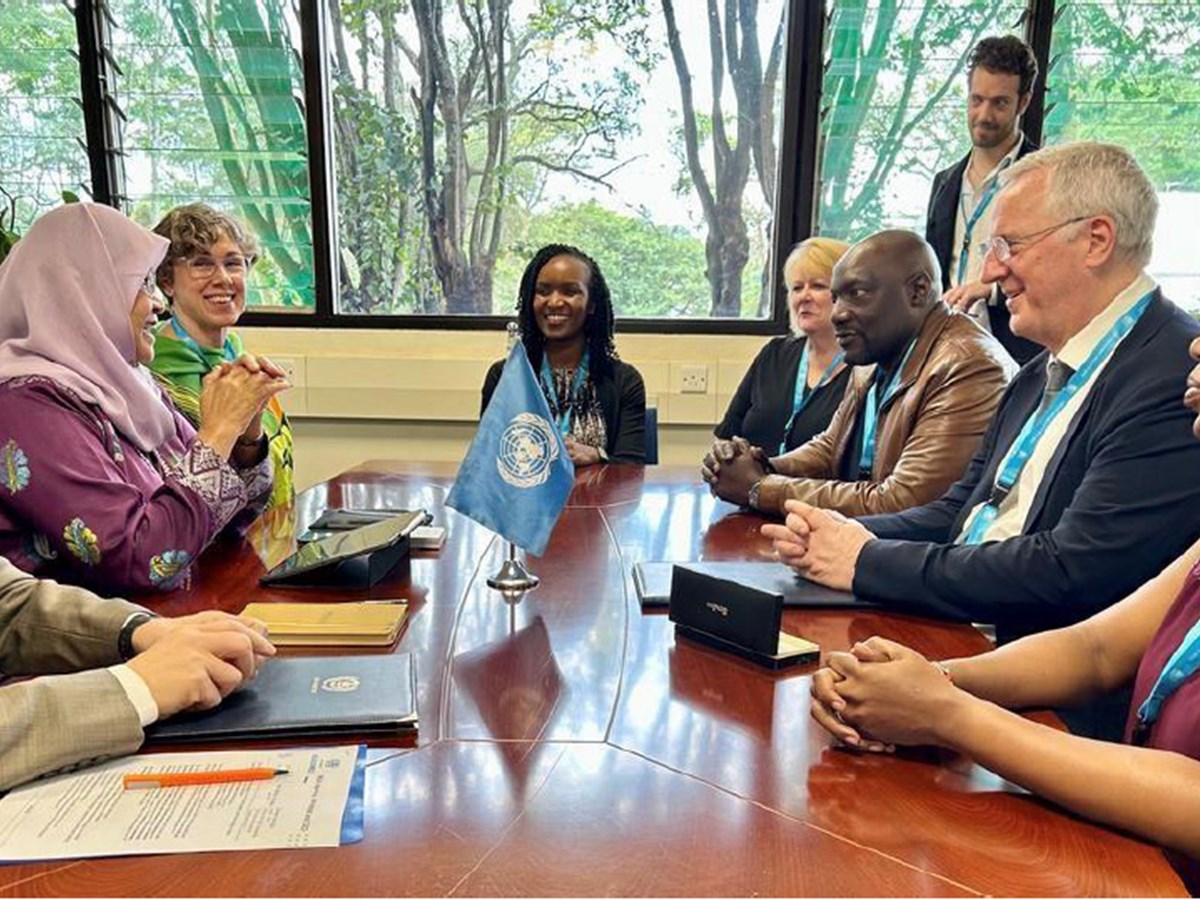Bruce Stiftel, FAICP, is professor emeritus of city and regional planning at Georgia Institute of Technology, and an Associate of RTPI based in the United States.
The second-ever UN-Habitat Assembly brought official delegations of UN member states to Nairobi in early June to set Habitat’s course for the upcoming quadrennium. Buoyed by the news that UN-Habitat has turned the corner on declining resources, the Assembly adopted resolutions highlighting key needs in the run for achievement of Sustainable Development Goals (SDGs) and the New Urban Agenda in cities while important partnerships were announced. The long list of successfully agreed platforms led UNH Executive Director Maimunah Sharif to declare, “UN-Habitat is back!”
The Assembly called for advancing provision of affordable housing for all, promoting recognition of the role of cities in addressing climate change, accelerating the upgrading of informal settlements, protecting biodiversity, underscoring the importance of urban planning to infrastructure provision, localising action for SDGs, promulgating guidelines for people-centred smart cities, supporting city resilience, launching a World Cleanup Day, and vitally, securing financing for the goals of SDG11 and the New Urban Agenda. UN-Habitat’s Strategic Plan time frame was extended two years in order to better line up with broader U.N. policy frameworks. Creation of a system for robust monitoring of progress on the resolutions was called for. First steps were taken to create a Sustainable Human Settlements Foundation to increase donor support for implementation of Habitat’s goals.

Meeting of the Habitat Professional Forum at the UN Habitat Second Assembly Meeting

From left to right, Bruce Stiftel, Dyan Currie - Co Chair of SAGE, UN Habitat Executive Director Maimunah Sharif, and Sri H. Sofjan (WUC)
Looking back on the uncertainty about UN-Habitat’s future that emerged at the Habitat III conference in 2016, the second Assembly can be seen as a celebration of a strengthened, better-connected agency. One head of state and 81 national ministers and vice-ministers were in attendance. This second meeting of the agency’s new all-member-state governing body reached consensus on almost all key issues. President William Ruta firmly stated Kenya’s commitment to extending the now 45-year UN Office Nairobi presence and a plan for expansion and renewal of the UNON campus was on display. My sense was of a vibe of renewed promise and optimism about the future.
At the same time, there was widespread concern about insufficient meaningful progress in cities to meet the demands of the SDGs, the New Urban Agenda and the Paris accords by their deadlines, with financial shortages broadly recognised.
Yet again, the Assembly adjourned without adopting a Stakeholder Engagement Policy. At a Global Stakeholders’ Forum the two days prior to the Assembly, representatives of dozens of Habitat partners called for more systematic involvement of local governments, professional bodies and civil society organizations in Habitat’s operations, and called for adoption of a resolution calling for a Stakeholder Engagement Policy. Despite this, only a handful of member states spoke about stakeholder engagement in their formal statements, and according to U.S. urban planner Genie Birch’s monitoring, only one country, Switzerland, stated support for adoption of such a policy. The question of stakeholder policy has been punted forward to a future meeting of the Assembly in 2025.
A meeting of the Habitat Professionals Forum, whose members include RTPI through the Global Planners Network, emphasised the importance of the Forum’s agreed Roadmap to Recovery as a guidebook for advancing Habitat’s goals. In European Council of Spatial Planners representative and RTPI member Vincent Goodstadt’s words, “Give us the tools; we’ll do the job”. Key UN-Habitat staffers in attendance expressed support for the Roadmap, with Neil Khor, special advisor to the Executive Director, saying capacity building is key and that the agency leadership is passionate about stakeholder engagement.
During the Assembly, Peter Obornand Kelley Moore representing the Commonwealth Sustainable Cities Initiative, a consortium of Commonwealth associations of planners (CAP), architects (CAA), local governments (CLGF) and universities (ACU) signed a Memorandum of Understanding with UN-Habitat aiming to address capacity gaps affecting governments, urban professionals and academia. This U.S. planner was glad to hear Peter Oborn describe this as a “Commonwealth-led initiative rather than a Commonwealth initiative”.

Signing of Commonwealth Sustainable Cities Initiative-UN-Habitat MoU

Bruce Stiftel by a banner promoting the World Urban Campaign to take action for sustainable urbanisation
A series of events raising profile for the Sustainable Urban Resilience for the Next Generation (SURGe) initiative pointed toward building substantial financial commitments for urban climate action by the time of COP-28 this coming fall. Our Planners 4 Climate Action side event (RTPI is a member here too) on Urban and Territorial Planning Response to the Climate Crisis was well attended by vocal and concerned participants. Together we recognized that planners’ involvement with climate action has grown broadly and effectively in the past decade but that greatly increased pace and vigor is needed to meet the Paris goals.
Finally, I’ll say that being on the campus of U.N. Office Nairobi was for me something of a star-struck experience. This is UN-Habitat’s and U.N. Environment Programme’s headquarters as well as regional office to UNDP and several dozen other U.N. agencies. Stepping through the gate onto the green and flag-bedecked campus from the streets of Nairobi and then into the hall where member state delegates sit together you can’t but feel the urgency of the United Nation’s economic and social mission. Our colleagues who work here and the diplomats who convene here set the tone and create political openings that make so much of what we do as planners possible.


